A Historical And Cultural Escape To Kalpitiya Dutch Fort In Sri Lanka
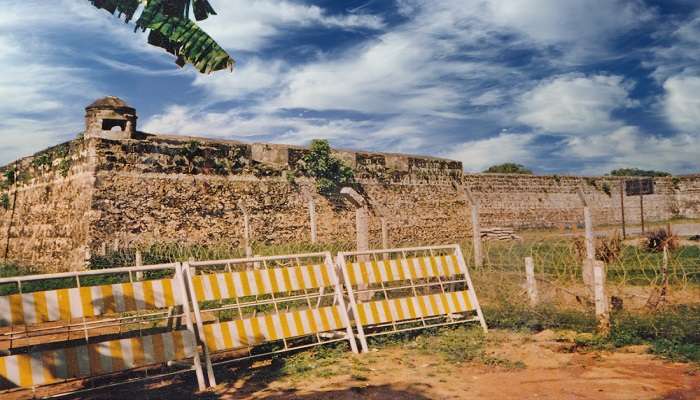
The history of Sri Lanka (a gorgeous island nation) is a rich tapestry woven with stories about ancient empires, colonisation and lively culture. The country has scattered remnants from the bygone era that would spill interesting anecdotes. One such fascinating landmark is Kalpitiya Dutch Fort located on the northwestern shores of Sri Lanka. During the civil war in Sri Lanka, it was an important naval installation used by sailors on behalf of the government. Today it still serves as a naval base and this historic treasure guarantees a journey back in time where you may discover about life behind its old walls.
Kalpitiya Dutch Fort History
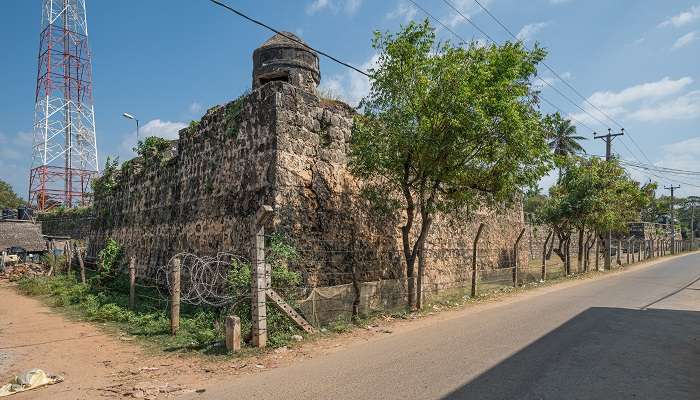
Kalpitiya Dutch Fort’s history unfolds a tale of strategic maritime importance and cultural exchange during the colonial era in Sri Lanka. A long time ago, there was an Arabian merchant village called Kav Putti. In 1544, the Portuguese arrived there and changed its name to Kardiv Island. They had also put up a small church and guard post. The sovereign ruler of the neighbouring Kandy kingdom didn’t like the Portuguese, so he took help from the Dutch to come and overthrow the Portuguese. In 1659, the Dutch came and got the land back, but they didn’t return it to the king. Rather, they instead decided to build a fort themselves whose construction began in 1667 and ended in 1676.
The Kalpitiya was a great spot for trading with the Kandyan kingdom, so it was a very crucial place for the Dutch East India Company. The Dutch told the king that they would build only the church and they tricked the king by building the archway, but the Dutch eventually ended up building a fort. In 1795, the British took over the fort and stayed until almost 1859. Even though it’s been long since then, the walls are still in good shape.
Must Read: UNESCO World Heritage Sites In Sri Lanka
Kalpitiya Dutch Fort Architecture
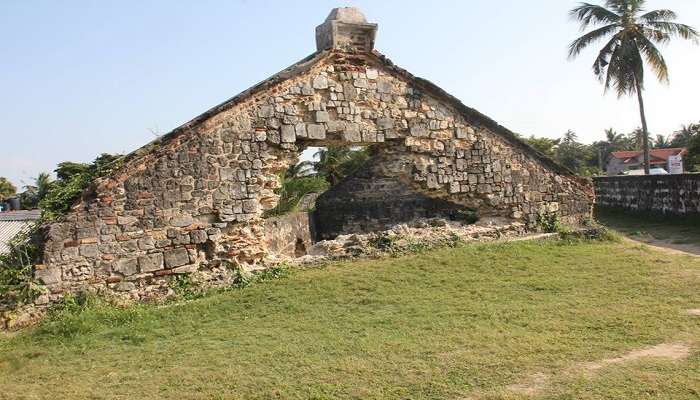
Kalpitiya Dutch Fort architecture showcases a unique blend of European military design and local craftsmanship, embodying a rich historical narrative of colonial presence in Sri Lanka. The fort has a square shape with walls four metres high. The walls are made from corals and limestone, which are available locally. The most interesting thing about this Fort is that there is only one entrance to the fort that faces a lagoon. This entrance has a fancy look like that of a doorway in a church, with some decoration at the top known as a pediment and a small bell tower referred to as a belfry. The special yellow bricks were even brought from Holland to construct this fancy-looking doorway.
There were four bastions on each corner and a guard post to keep an eye on everything. Because it is near the lagoon, two of the lookout points were slightly smaller. Inside the fort, buildings were not clumped together at its centre. Instead, they were built all around along its edges, leaving huge open space. Archaeologists have discovered many ruined buildings within the fort without their roofs. These include chapels, barracks, eating halls, commanders’ residences, and prisons. There used to be two hidden tunnels leading out of the fort. One stretched to the ocean while another led to a Dutch church situated nearly half a kilometre away. However, these tunnels are now closed, and cannot be accessed.
Kalpitiya Dutch Fort Nearby Attractions
Kalpitiya Dutch Fort Sri Lanka is just one of the captivating historical landmarks that you must explore. In its vicinity, there are countless ways for nature enthusiasts to enjoy themselves, adventure seekers to get a thrill, and those looking for relaxation to find it. Below are some of the famous locations.
1. Baththalangunduwa Island
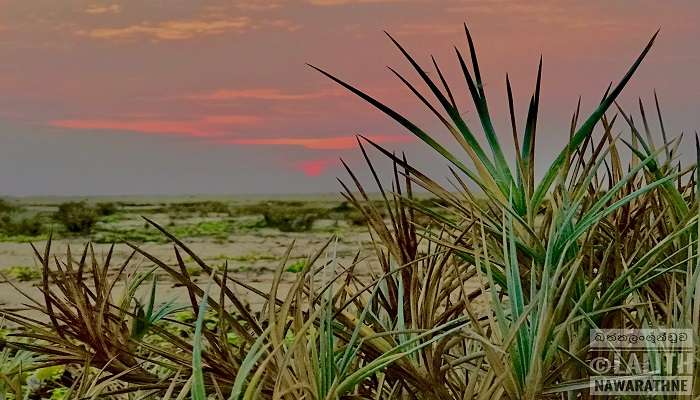
The journey to Baththalangunduwa is an adventure in itself. You will take a boat ride across crystal clear waters right from Kalpitiya. It costs about 250 rupees (LKR) per person for a boat ride. Once you reach Baththalangunduwa, pristine beaches welcome you with calmness in their ambience. You can camp right on the beach under the sky full of stars. Camping enables you to see the island’s true beauty. Fall asleep to the sound of waves and wake up with birds singing around your tent. The island is fairly large as it covers over 145 hectares, so finding a cosy place for camping should be no problem.
Suggested Read: Places To Visit In Sri Lanka In 2 Days
2. Kalpitiya Beach

The waves here are not small or gentle but big and rolling, perfect for surfers. There are instructors available at Kalpitiya Beach who can teach you how to ride waves. The beach also offers kiteboarding enthusiasts an exceptional place for their sport. It involves standing on a board while a large kite lifts you into the sky, like surfing in space. If you don’t like catching waves, then dolphins and whales will thrill you at the beach. Seeing them live will leave indelible memories. The water is so clear that you can see different types of multicoloured fish, sea turtles and even beautiful coral reefs. It’s like swimming in a huge aquarium.
3. Wilpattu National Park
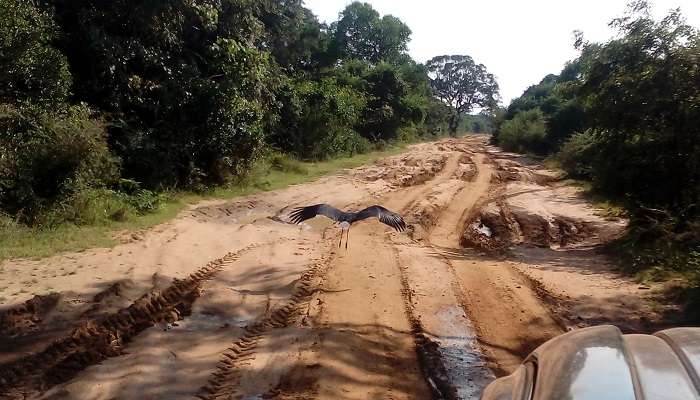
It’s a gigantic park sprawling over 131,693 hectares and is like a mini world with interesting plants and animals. Its uniqueness is attributed to the presence of Wilpattu’s special lakes known as “villus” which act as natural pools that fill up because of rain – perfect for thirsty animals. Furthermore, the park has a rich history that goes back to around 300 BC. Villages in this area have medicinal plants such as thumba, nelli and henna. Be amazed by the incredible animals living in Wilpattu National Park. The park hosts more than 31 mammal species, and the main attraction is the Sri Lankan leopard. The park has over 200 bird species, such as junglefowl, grey hornbill and brown-capped babbler.
Suggested Read: Picnic Places In Sri Lanka
4. Kudawa Beach
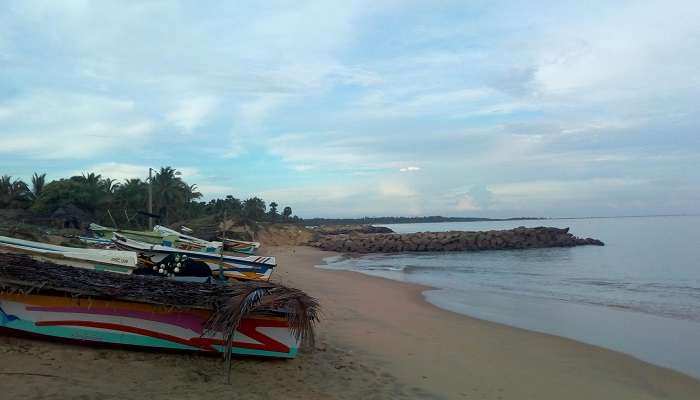
Unlike some other busy beaches, Kudawa Beach offers an easy escape. You can hear birds calling each other and waves splashing against the shore. The water is not very deep, which makes it safe for kids to play. Kids can have fun by building sandcastles, collecting shells or swimming in the cool waters. For action-orientated visitors, there are numerous spots where you can participate in watersports activities. If you prefer something less noisy, get on a boat and explore a nearby lagoon. With some luck, you will be able to see dolphins or even whales. The beach area itself contains different types of ecosystems including colourful coral reefs with lots of fish.
5. Alankuda Beach
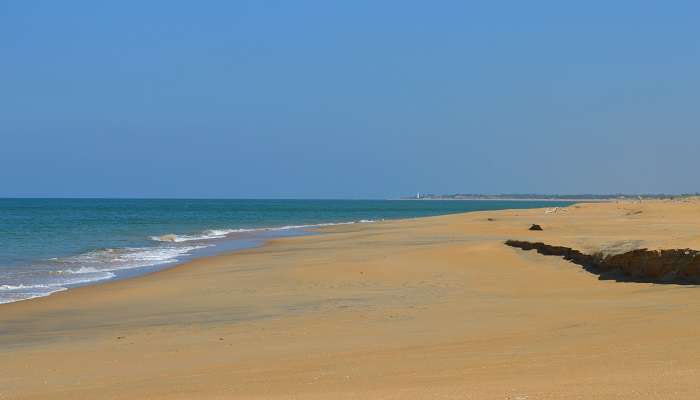
The beauty of Alankuda Beach is not just limited to a big swimming pool. You can try jet skiing, water skiing, sailing or windsurfing. You can also do snorkelling and see colourful fish, interesting coral reefs and other playful sea creatures. Alankuda Beach is also one of the best places for dolphin and whale watching. The incredible mammals frequently approach close to the seashores. Moreover, you can try to fly kites. A gentle afternoon breeze will carry your kite high above. The best period to visit this place is between November and April. During this time, weather conditions are most conducive for outdoor swimming and playing games because it isn’t too hot or rainy.
Suggested Read: Hotels In Unawatuna
How To Reach Kalpitiya Dutch Fort
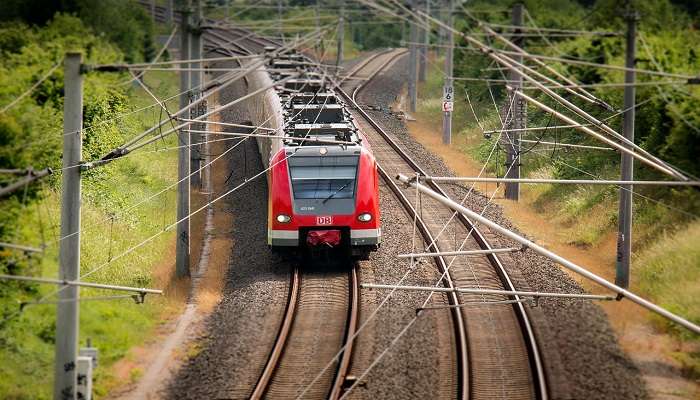
There are several options to reach the fort. The town is connected by public buses from major cities like Colombo and Puttalam. Although this is the cheapest option, travel times can be longer. You can also rent a car to travel to Fort and visit other parts of the region as well. It takes around four to five hours to get here from Colombo, while Puttalam is just about an hour and a half away. Taxis are also easily found in all the major cities, and you can hire one for a convenient ride to Kalpitiya.
Further Read: Places To Visit In Sri Lanka With Family
Kalpitiya Dutch Fort Sri Lanka provides insights into the country’s fascinating past. Although the exploration of the fort itself may be limited, surrounding areas offer boundless adventures such as breathtaking wildlife safaris in Wilpattu National Park, beaches for relaxation and thrilling water sports among others. So, pack your bags, book your trip to Sri Lanka trip to Sri Lanka and experience the enchantment first-hand.
For our editorial codes of conduct and copyright disclaimer, please click here.
Cover Image Credit: kallerna for wikimedia commons
Frequently Asked Questions About Kalpitiya Dutch Fort
Can we swim near the Kalpitiya Dutch Fort?
Swimming is prohibited as it is a naval base but there are many beaches near Fort where you can enjoy swimming.
Are there any restricted areas within the Fort?
Yes, some places are restricted due to security reasons. You can’t go there but you can see the relevant places from far away and enjoy the serene beauty.
Is Kalpitiya Dutch Fort accessible for people with disabilities?
It might be difficult for those who have mobility issues because of the rough terrain. But the wheelchair and other assistance are there that a tourist can get.
Are there any shops or stalls near the Kalpitiya Dutch Fort where I can buy souvenirs?
There are local vendors selling souvenirs outside the fort and even in neighbouring towns. Do shopping from the variety and don't forget to do bargaining.
What are the opening hours for Kalpitiya Dutch Fort?
The Kalpitiya Dutch Fort opening hours are from 8:30 AM to 5:30 PM on Monday, Tuesday, Thursday, Saturday and Sunday. So plan your visit during this time accordingly.
People Also Read:
Manjarabad Fort Red Fort Jaisalmer Fort

Unveil the hidden treasures of the globe and turn every travel dream into reality. As a Content Writer, I am passionate enough to craft stories from ancient wonders to modern marvels. My words paint the picture-perfect itinerary for unforgettable experiences. Let my words be your trusted guide to immerse in the diverse culture and discover the beauty of the unknown.











